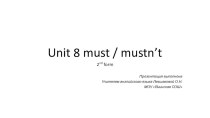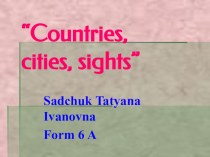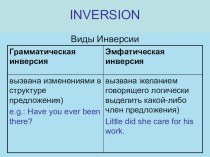- Главная
- Разное
- Бизнес и предпринимательство
- Образование
- Развлечения
- Государство
- Спорт
- Графика
- Культурология
- Еда и кулинария
- Лингвистика
- Религиоведение
- Черчение
- Физкультура
- ИЗО
- Психология
- Социология
- Английский язык
- Астрономия
- Алгебра
- Биология
- География
- Геометрия
- Детские презентации
- Информатика
- История
- Литература
- Маркетинг
- Математика
- Медицина
- Менеджмент
- Музыка
- МХК
- Немецкий язык
- ОБЖ
- Обществознание
- Окружающий мир
- Педагогика
- Русский язык
- Технология
- Физика
- Философия
- Химия
- Шаблоны, картинки для презентаций
- Экология
- Экономика
- Юриспруденция
Что такое findslide.org?
FindSlide.org - это сайт презентаций, докладов, шаблонов в формате PowerPoint.
Обратная связь
Email: Нажмите что бы посмотреть
Презентация на тему Roman Britain
Содержание
- 2. Roman Britain, referred to by the Romans
- 3. This Roman imperial province eventually comprised all
- 4. The first extensive Roman campaigns in Britain
- 5. Britain was invaded by the Roman governor
- 6. Hadrian's Wall viewed from Vercovicium
- 7. The Roman Empire, in the reign of
- 8. Скачать презентацию
- 9. Похожие презентации
Roman Britain, referred to by the Romans as Britannia, was the part of the island of Great Britain controlled by the Roman Empire from 43 until c. 410.
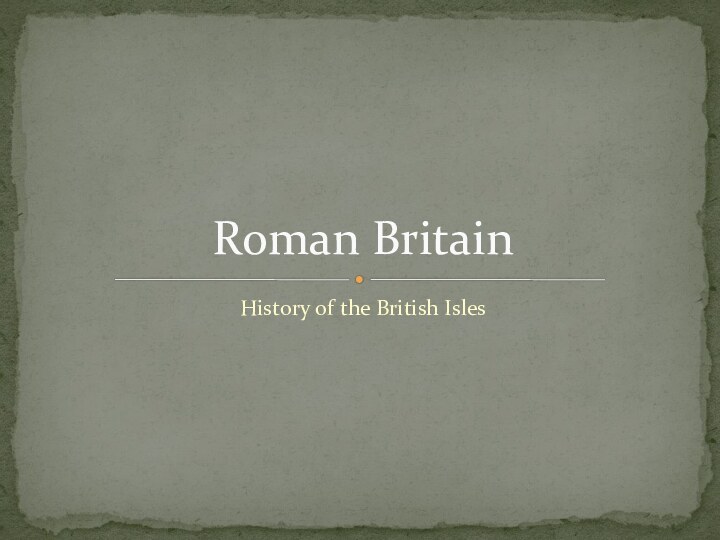
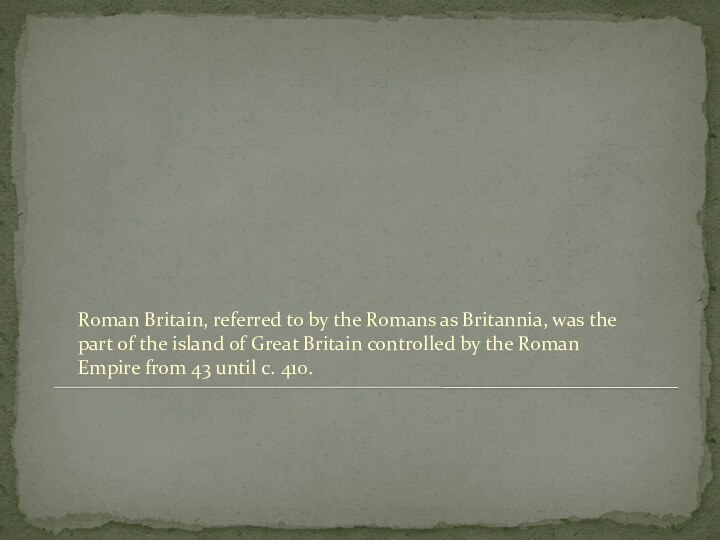
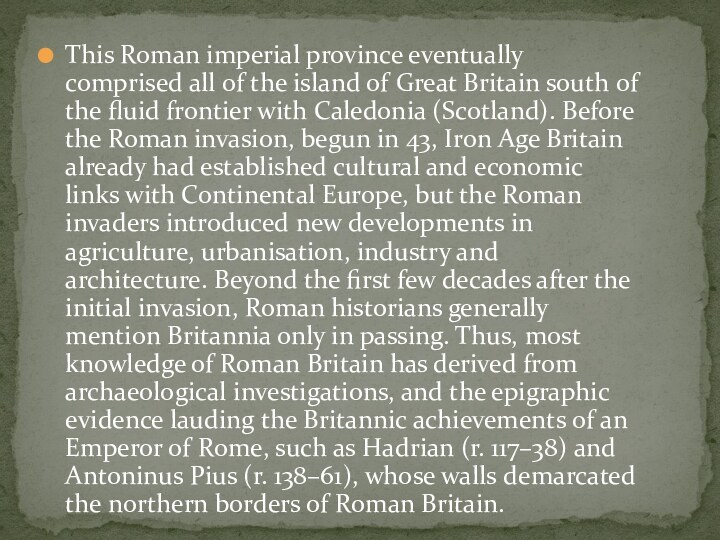
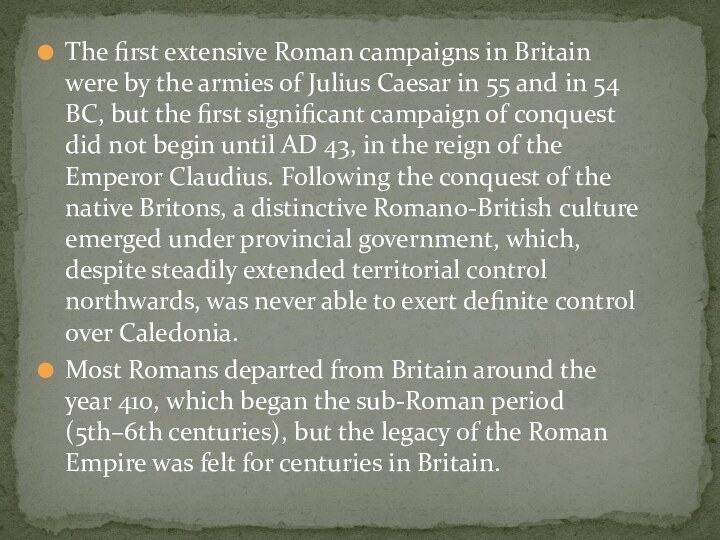
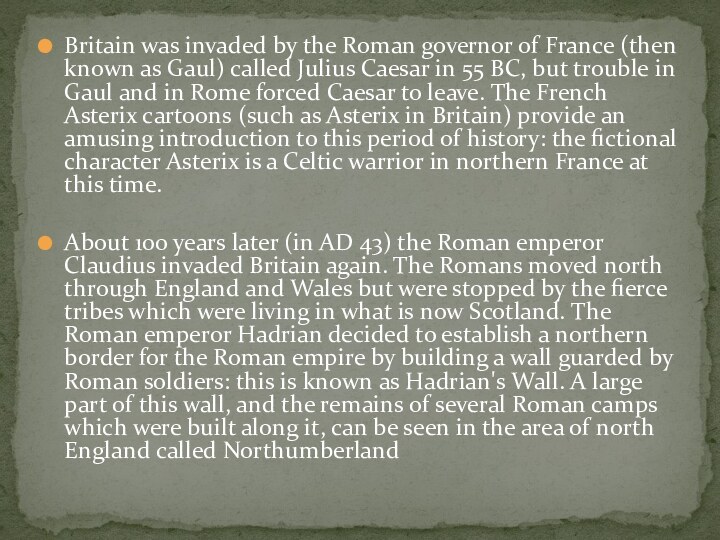
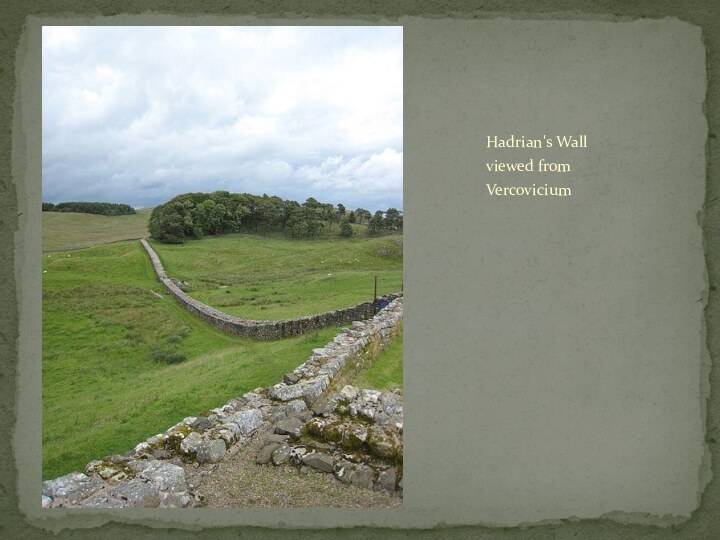
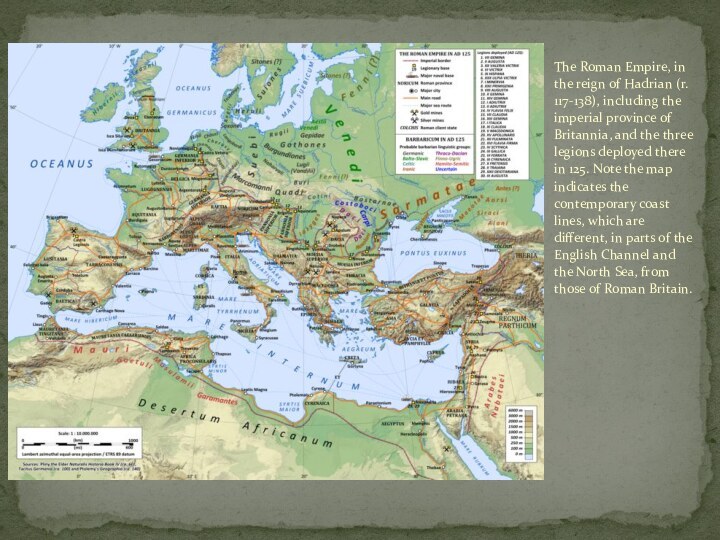
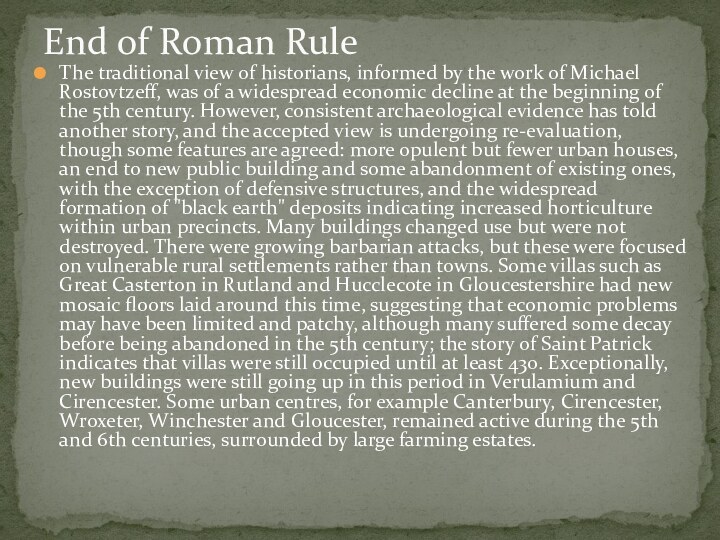
Слайд 3 This Roman imperial province eventually comprised all of
the island of Great Britain south of the fluid
frontier with Caledonia (Scotland). Before the Roman invasion, begun in 43, Iron Age Britain already had established cultural and economic links with Continental Europe, but the Roman invaders introduced new developments in agriculture, urbanisation, industry and architecture. Beyond the first few decades after the initial invasion, Roman historians generally mention Britannia only in passing. Thus, most knowledge of Roman Britain has derived from archaeological investigations, and the epigraphic evidence lauding the Britannic achievements of an Emperor of Rome, such as Hadrian (r. 117–38) and Antoninus Pius (r. 138–61), whose walls demarcated the northern borders of Roman Britain.Слайд 4 The first extensive Roman campaigns in Britain were
by the armies of Julius Caesar in 55 and
in 54 BC, but the first significant campaign of conquest did not begin until AD 43, in the reign of the Emperor Claudius. Following the conquest of the native Britons, a distinctive Romano-British culture emerged under provincial government, which, despite steadily extended territorial control northwards, was never able to exert definite control over Caledonia.Most Romans departed from Britain around the year 410, which began the sub-Roman period (5th–6th centuries), but the legacy of the Roman Empire was felt for centuries in Britain.
Слайд 5 Britain was invaded by the Roman governor of
France (then known as Gaul) called Julius Caesar in
55 BC, but trouble in Gaul and in Rome forced Caesar to leave. The French Asterix cartoons (such as Asterix in Britain) provide an amusing introduction to this period of history: the fictional character Asterix is a Celtic warrior in northern France at this time.About 100 years later (in AD 43) the Roman emperor Claudius invaded Britain again. The Romans moved north through England and Wales but were stopped by the fierce tribes which were living in what is now Scotland. The Roman emperor Hadrian decided to establish a northern border for the Roman empire by building a wall guarded by Roman soldiers: this is known as Hadrian's Wall. A large part of this wall, and the remains of several Roman camps which were built along it, can be seen in the area of north England called Northumberland









